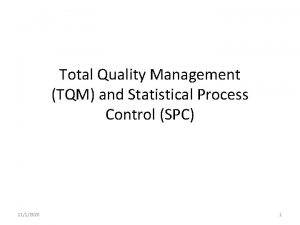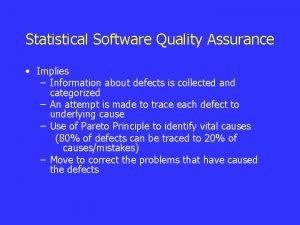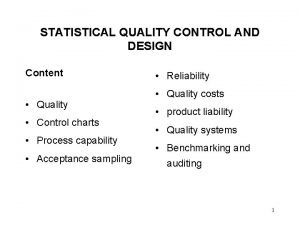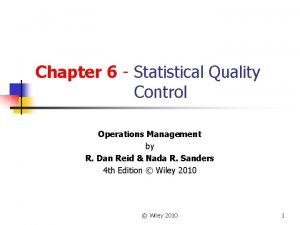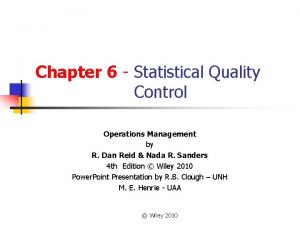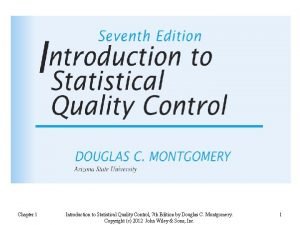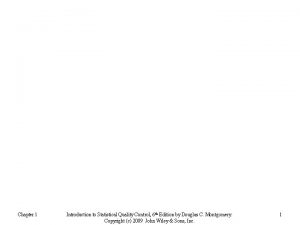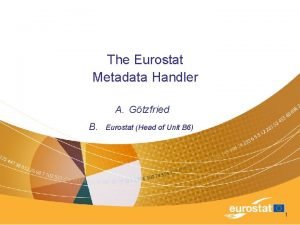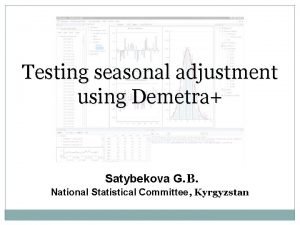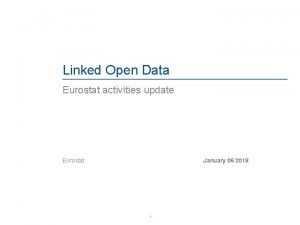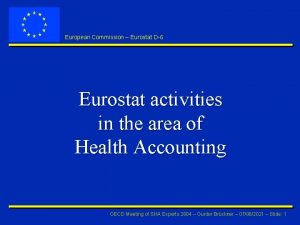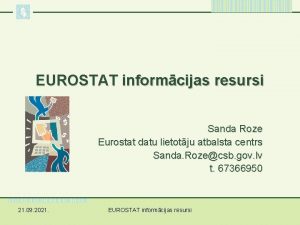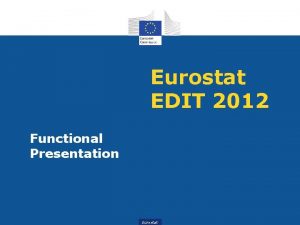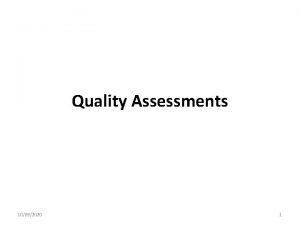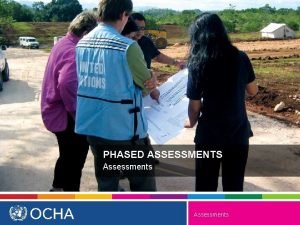Quality Assessments of Statistical Production Processes in Eurostat














- Slides: 14

Quality Assessments of Statistical Production Processes in Eurostat Pierre Ecochard and Małgorzata Szczęsna pierre. ecochard@ec. europa. eu, malgorzata. szczesna@ec. europa. eu

Quality assessment in the ESS: 2005 -2007 “Over the last three years (2005 -2007), how many of your statistical processes have been monitored using: ”

Quality assessment in the ESS: 2008 -2010 “Over the next three years (2008 -2010), how many of your statistical processes do you plan to monitor using: ”

Audits and self-assessments in the ESS Number of NSIs conducting: Audits 5 NSIs SAs 9 NSIs 7 NSIs 10 NSIs

Background The European Statistics Code of Practice The Eurostat Quality Assurance Framework Documentation Measurement • Quality reports • Quality indics • Process descriptions • Process variables etc Evaluation Conformity Quality Assessments Labelling

What is Eurostat Quality Assessment? A systematic review and evaluation of all stages of the statistical production process with the use of the DESAPbased Checklist Follow-up User needs Data collection Validation Confidentiality Documentation Dissemination IT conditions; Management, planning and legislation; Staff, work conditions and competence

Assessment Outputs (1) Assessment Report

Assessment Outputs (2) Accessibility and clarity Assessment Diagram Overall quality of metadata 5 Comparability across countries Relevance 4 User satisfaction 3 Comparability 2 1 0 Comparability over time Accuracy Overall accuracy Coherence General coherence Timeliness of final publication

Assessment Outputs (3) Highlight of good practice

Categories of Eurostat assessments Process 2 Process 1 Self. Assessment Process 5 Process 4 Process 3 Supported Self-Assessment Peer Review Characteristics: - Periodicity - Legal Basis - Output - ESTAT intervention Rolling Review Similiarity: DESAP-based Checklist, outputs Difference: extent of external interventation in a review

Office-wide implementation plan n Approach piloted in two domains in 2007 n Most of the statistical process will benefit from an assessment within a three-year period 2008 -2010 n 33 reviews planned for 2008: – – 14 Supported Self-Assessments 14 Self-Assessments 4 Rolling Reviews 1 Peer Review n Follow-up report to Eurostat management by the end of 2008

Benefits of quality assessment For production teams: n An opportunity for a systematic analysis of the production process n Identify and prioritize improvement actions n Spread and benefit from the Good Practice For Eurostat: n Identify horizontal problematic issues n Foster standardisation of statistical processes n Support resource allocation, planning and programming n Show quality commitment

Feedback n The general workflow works well, the Checklist is flexible and the assessments are considered useful by domain managers n Heads of Unit should be involved earlier n The diagram can be a red herring: it should be used with caution n The ownership of the results should be made very clear n More assessment should involve an external expert

Keys for success in implementing quality assessments n Top management commitment n Middle management acceptance n Sound communication n Long term perspectives n Implementation and fine-tuning in pilot projects n Standardised use of methods n Clear responsibilities and ownership n Sufficient resources allocated for the assessments
 Apa yang dimaksud dengan pre production process
Apa yang dimaksud dengan pre production process Concurrent processes are processes that
Concurrent processes are processes that Grandfather of tqm
Grandfather of tqm Statistical software quality assurance
Statistical software quality assurance Gauginf
Gauginf Operations management quality control
Operations management quality control Statistical quality control in operations management
Statistical quality control in operations management Introduction to statistical quality control
Introduction to statistical quality control Introduction to statistical quality control
Introduction to statistical quality control Statistical quality assurance in software engineering
Statistical quality assurance in software engineering Artynoids
Artynoids Metadata handler
Metadata handler Eurostat query builder
Eurostat query builder Edamis web portal
Edamis web portal Demetra eurostat
Demetra eurostat


